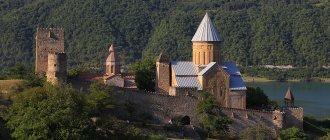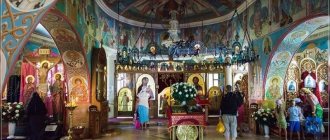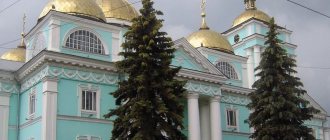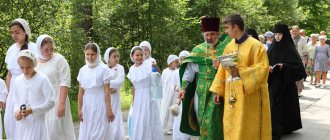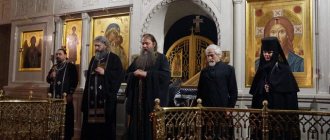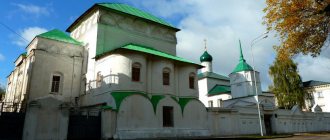Mir
Russia Yaroslavl Region Rostov Trinity-Sergius Varnitsky Monastery Map loading in progress...
{"format":"leaflet","minzoom":false,"maxzoom":false,"limit":50,"offset":0,"link":"all","sort":[""], "order":[],"headers":"show","mainlabel":"","intro":"","outro":"","searchlabel":"\u2026 \u0441\u043b\u0435\ u0434\u0443\u044e\u0449\u0438\u0435 \u0440\u0435\u0437\u0443\u043b\u044c\u0442\u0430\u0442\u044b","default":"","import-annotation":false,"width ":"auto","height":"350px","centre":{"text":"","title":"""link":"""lat":57.19964800000000337831806973554193973541259765625,"lon": 39.37607799999999969031705404631793498992919921875,"icon":""},"title":"","label":"","icon":"","lines":[],"polygons":[],"circles":[ ],"rectangles":[],"copycoords":false,"static":false,"zoom":8,"defzoom":14,"layers":["OpenStreetMap"],"image layers":[] ,"overlays":[],"resizable":false,"fullscreen":true,"scrollwheelzoom":true,"cluster":false,"clustermaxzoom":9,"clusterzoomonclick":true,"clustermaxradius":80, "clusterspiderfy":true,"geojson":"","clicktarget":"","showtitle":true,"hidenamespace":false,"template":"","userparam":"","activeicon": "","pagelabel":false,"ajaxcoordproperty":"","ajaxquery":"","locations":[{"text":"\u003Cb\u003E\u003Ca href=\"/palomnik/%D0% A2%D1%80%D0%BE%D0%B8%D1%86%D0%B5-%D0%A1%D0%B5%D1%80%D0%B3%D0%B8%D0%B5%D0%B2_ %D0%92%D0%B0%D1%80%D0%BD%D0%B8%D1%86%D0%BA%D0%B8%D0%B9_%D0%BC%D0%BE%D0%BD%D0 %B0%D1%81%D1%82%D1%8B%D1%80%D1%8C\" title=\"\u0422\u0440\u043e\u0438\u0446\u0435-\u0421\u0435\u0440\u0433\ u0438\u0435\u0432 \u0412\u0430\u0440\u043d\u0438\u0446\u043a\u0438\u0439 \u043c\u043e\u043d\u0430\u0441\u0442\u044b\u0440\u0 44c\"\u003E\u0422\u0440\ u043e\u0438\u0446\u0435-\u0421\u0435\u0440\u0433\u0438\u0435\u0432 \u0412\u0430\u0440\u043d\u0438\u0446\u043a\u0438\u0439 \u 043c\u043e\u043d\u0430\u0441 \u0442\u044b\u0440\u044c\u003C/a\u003E\u003C/b\u003E\u003Chr /\u003E\u003Ca href=\»/palomnik/%D0%A1%D0%B2%D0%BE%D0%B9 %D1%81%D1%82%D0%B2%D0%BE:%D0%90%D0%BD%D0%BD%D0%BE%D1%82%D0%B0%D1%86%D0%B8% D1%. 0410 \u043d\u043d\u043e\u0442\u0430\u0446\u0438\u044f\u003C/a\u003E: \u043f\u0440\u0430\u0432\u043e\u0441\u043b\u0430\u0432\u043 d\u044b\u0439 \u043c\ u0443\u0436\u0441\u043a\u043e\u0439 \u043c\u043e\u043d\u0430\u0441\u0442\u044b\u0440\u044c \u0432 \u042f\u0440\u043e\u0441\u 043b\u0430\u0432\u0441\u043a\ u043e\u0439 \u043e\u0431\u043b\u0430\u0441\u0442\u0438, \u043e\u0441\u043d\u043e\u0432\u0430\u043d\u043d\u044b\u0439 \u0432 1427\u0433.","title": "" \u0438\u0439 \u043c\u043e \u043d\u0430\u0441\u0442\u044b\u0440\u044c","link":"","lat":57.19964800000000337831806973554193973541259765625,"lon":39.376077999999 99969031705404631793498992919921875,"icon":""}],"imageLayers":[] }
57.199648; 39.376078
Russia, Yaroslavl region, Rostov, Varnitsy village
Rostov, Yaroslavl region
Russia
Trinity-Sergius Varnitsky Monastery
- an Orthodox male monastery in the Yaroslavl region, founded in 1427. The monastery was founded in memory of St. Sergius of Radonezh. According to some information - on the territory of the estate of Kirill and Maria. According to others, at the place where the monk appeared to the youth Bartholomew. The first church of the monastery was the Trinity Church.
This monastery in blogs
History[edit]
Very little is known about the first centuries of the existence of the Trinity-Sergius Varnitsa Monastery. He was neither rich nor famous, and glowed like a quiet lamp, marking and protecting the place where the Monk Sergius was born and raised.
The monastery was founded in 1427, five years after the discovery of the honest relics of the abbot of Radonezh. At that time, in Rostov and its environs there were still alive people who had heard the stories of their parents about the Monks Kirill and Mary and could indicate to the founder of the monastery, Archbishop Ephraim of Rostov, the place where their home had once been located.
The settlement was quite crowded; there were three churches, of which by the end of the 18th century only one remained - in the name of St. Clement, Pope of Rome.
It is appropriate to associate the prosperity of the settlement with the salt industry. When salt mining stopped, the settlement began to empty.
Meanwhile, the monastery lived its humble life. There were no ascetics known for their special prayerfulness and insight, nor were there any shrines for which pilgrims would be willing to travel tens and hundreds of miles. And therefore it is not at all strange that for a long time he remained not just poor, but very poor, and did not have stone churches even in the 17th century, when they already appeared in many urban and “suburban” monasteries.
During the Polish-Lithuanian invasion, the Varnitsky Monastery did not escape a sad fate - the interventionists burned it and plundered it. After this, the monastery eked out a most miserable existence until 1624, when Tsar Mikhail Fedorovich gave it a charter.
In 1725, a ruling was made by Archbishop Georgy of Rostov and Yaroslavl, according to which the Varnitsky Monastery became a nunnery and the nuns of the Nativity Monastery were transferred here. The Varnitsa brethren, in turn, were moved to the Spaso-Pesotsky Monastery, which was located side by side with the Yakovlevsky Monastery and several decades later assigned to it.
The nuns in Varnitsa had a hard time. Experiencing a shortage of everything, starting with firewood and food, in the same 1725 they turned to Bishop George with a request to transfer them back to the Nativity Monastery. The request was granted, but not immediately. For six years the sisters endured hardships, laboring in a poor monastery far from the city. In 1731, monks returned to the Trinity-Sergius Varnitsky Monastery.
In 1770, construction began on a stone cathedral with a bell tower, consecrated in 1771 in the name of the Holy Trinity (like the previous wooden church).
In 1829, in the monastery chronicle, for the first time there is a mention of the new Vvedenskaya Church - in connection with the arrival of the Archbishop of Yaroslavl and Rostov Abraham, who inspected it.
In 1892, in memory of the 500th anniversary of the repose of St. Sergius, an almshouse for the elderly and poor clergy of the Yaroslavl diocese and a hospice house were built near the monastery on the south side. The buildings were created with the money of various benefactors, the first of which was the Yaroslavl Bishop Ioanafan; the Varnitsa monastery contributed 1 thousand rubles.
This record shows, among other things, that the condition of the Varnitsky monastery improved so much during the 19th century that he himself was able to do charity.
1923. On March 20, Hieromonk George (the last abbot of the Varnitsa monastery) in the Yakovlevsky monastery was elevated to hegumen and archimandrite, and on February 26, 1924, Archimandrite George, by order of the godless authorities, was evicted from his cells and the monastery.
In 1995, the monastery was returned to the Church.
In 1989, a church community of 111 citizens living in the village of Varnitsa was registered. The parish churches of the Resurrection of the Word (1814) and Saints Paisius and Uara (1893) near the Varnitsky Monastery were transferred to the church. They were repaired by the inhabitants of the Trinity-Sergius Lavra.
In 1995, by decree of His Holiness Patriarch Alexy II and at the request of Archbishop Micah of Yaroslavl and Rostov, the Trinity-Sergius Lavra took the Varnitsa monastery under its patronage. Restoration work has begun. The first abbot of the monastery was Abbot Boris (Khramtsov). Under him, a bypass road was made around the monastery. Part of the monastery premises was returned to the church.
In 2000, construction began on a new Trinity Cathedral (as similar as possible to the demolished one).
In 2002, an Orthodox gymnasium named after St. Sergius began operating in Varnitskaya Sloboda. In 2005, a department of a gymnasium with boarding accommodation for young people, students of grades X - XI, was opened in the monastery itself. This boarding school has become widely known throughout the country.
On July 29, 2003, the foundation stone for the gate temple took place.
In 2014, His Holiness Patriarch Kirill of Moscow and All Rus' consecrated the Cathedral of St. Sergius of Radonezh, the main temple of the monastery.
Abbots
- Joseph (mentioned 1482)
- Abraham, builder (January 1614)
- Niphon (Jan. 1624)
- Jonah (1647)
- Timofey (1654)
- Jonah (mentioned September 1657 - mentioned October-December 1662)
- Varlaam (1708)
- Ioannikiy (1722)
- Christopher (1725 - 1731)
- Mastridia (1729 - ?)
- Avraamiy (November 3 - December 3, 1861), priest, treasurer
…
From 1919 to 1995 the monastery was closed
Current state[edit]
The Rostov monastery was restored in 1996. What remains of the old buildings are: the fence, the Vvedenskaya Church (1828), which has already been restored. The complex of monastery buildings has been almost completely rebuilt. Trinity Cathedral was rebuilt in its original location and consecrated by Patriarch Alexy II in 2005. Construction of the cathedral is underway in honor of St. Sergius of Radonezh, which should end in 2014. It is the courtyard of the Trinity-Sergius Lavra.
A kilometer from the monastery there is a consecrated spring, which was once a salt well.
There is an Orthodox gymnasium at the monastery: the gymnasium-boarding school named after St. Sergius of Radonezh boys, students in grades 10-11, and a gymnasium without a boarding school for boys and girls, located near the monastery, next to the churches of the Resurrection of the Word and in the name of St. Paisius the Great and the Hieromartyr Uar.
Details on the official website of the gymnasium
Temples:
- Cathedral of St. Sergius of Radonezh
- Church of the Resurrection of the Word
- Church of Saints Paisius and Huara
- Trinity Cathedral
- Refectory Church in honor of the Entry into the Temple of the Blessed Virgin Mary
- Gate Church in the name of St. Kirill and Maria
- Chapel of St. Sergius of Radonezh
Take a virtual tour of the monastery
Entrepreneurs from the banks of Pesosha and Pechnya
The Varnitsky monastery was founded in the neighborhood of a settlement, located near a small settlement, the original name of which has not been preserved. It is only known that in the scribe books of the 16th and 17th centuries. it was officially called Nikolskaya after the name of the Church of St. Nicholas located on its territory.
The main occupation of the Sloboda residents was the extraction of salt, for which salt pans stood along the banks of two nearby rivers - Pesoshi and Pechnya. Over time, their fishing fell into decline, and the settlement, which began to empty out, gradually turned into a small village. However, the name that was once given to it, Varnitsa, is firmly rooted among the people, reminiscent of the former occupation of the inhabitants.
Patronal holidays[edit]
- Vitaly of Alexandria, Venerable
– May 5 - Sergius of Radonezh, Venerable
- Cathedral of Moscow Saints, July 18 (Discovery of venerable relics), October 8 (Repose) - Trinity Day
- 50th day after Easter - Paisius the Great, Venerable
– July 2 - Renovation of the Church of the Resurrection of Christ in Jerusalem (Resurrection of the Word)
- September 26 - Cyril and Maria of Radonezh, parents of St.
Sergius of Radonezh, reverends - October 11, January 31 - Uar of Egypt, martyr
- November 1 - Helena of Serbia, Queen, Reverend
- November 12 - Presentation of the Blessed Virgin Mary into the Temple
- December 4
Birth of Bartholomew
In the family of boyar Kirill and his wife Maria - that was the name of the parents of Sergius of Radonezh - there were three children, three boys. When was the future Russian saint born? The exact date of birth is not known.
Presumably, his birthday was May 3, 1319. Surprisingly, there are many blank spots in the life of such a famous person. Only the date of death is known for certain; the dates of other events are only guesswork.
On his birthday, his parents gave Sergius of Radonezh the name Bartholomew. The boy was the middle child in the family. His brothers studied well at school, but Bartholomew had a hard time studying; he did not understand the Holy Books that he was trying to read. Bartholomew turned to God with fervent prayers, begging him to help him learn to read and write.
How to get there[edit]
Address:
152120, Yaroslavl region, Rostov the Great, Varnitsy village (p/o Ishnya village), Trinity-Sergius Varnitsky Monastery
Directions:
- By car from Moscow
along the highway to Yaroslavl, after entering Rostov, turn left at the Boriso-Glebsky turn, passing through the railway crossing, turn right, after 1.5 km - the Trinity-Sergius Varnitsky Monastery.
- By train from Moscow
from Yaroslavsky station go to Rostov (202 km, 3 hours). From the station, take a bus or walk to the City Center (Kolkhoznaya Square). There, take the bus to Warnitz (10-15 minute ride) or take a taxi.
- get there from Rostov
both from the western side and from the eastern side. It's closer on the western side, but you'll have to cross a railroad crossing there. On the eastern side, the railway is crossed by a bridge.
- For questions related to your arrival, please contact the Pilgrimage Service
.
More details on the official website of the monastery
Reception room of the rector (reception of calls from Mon. to Fri. from 9:00 to 17:00):
- Telephone:
+7 960 526 70 33 - Email:
Pilgrimage service (hotel, excursions, refectory):
- Telephone:
+7 964 167 04 10 - Email:
Further life of the monastery in the 18th century
During the reign of Catherine II, who carried out large-scale secularization (seizure in favor of the state) of church lands, many Russian monasteries lost their main source of existence. Rostov the Great was not spared the trouble either. In those years, the Varnitsky monastery was taken out of state, that is, left without state support, but, fortunately, it managed to preserve land plots, albeit small, but generating a certain income. In addition, in the second half of the 18th century, voluntary donors from among the local merchants provided active assistance to him.
It was during this period that many stone structures were erected, making up its unique architectural complex. Thus, on the site of the former wooden church, in the late 70s, a monumental stone cathedral, consecrated in honor of the Holy Trinity, grew up. Its bell tower was for a long time the tallest building in Rostov. At the same time, another temple was built in the Varnitsky Monastery, dedicated to St. Nicholas the Wonderworker, but it was destined to stand for no more than half a century. In 1824, the temple was destroyed by a terrible fire that engulfed the monastery.
Pilgrim[edit]
Divine services[edit]
The current schedule of services is available on the official website of the monastery
Pilgrimage service[edit]
- Address: 152120, Yaroslavl region, Rostov the Great, Varnitsy village
- Telephone
The pilgrimage service of the Trinity-Sergius Varnitsa Monastery invites you to visit the homeland of St. Sergius of Radonezh. Here you can take part in monastic services, venerate the Cross installed at the site of the appearance of the elder to the youth Bartholomew.
Tours of the monastery are held daily from 8:00 to 19:00. During the excursion, you will be told about the life of St. Sergius of Radonezh and his parents, about the centuries-old history of the monastery, and will be introduced to the life of the Orthodox gymnasium. Duration of the excursion: 45-60 minutes. The tour requires a donation.
There is a hotel on the territory of the monastery. Pilgrims and hotel guests are given the opportunity to eat in the monastery refectory.
In order for a meal to be prepared for your arrival and/or an excursion to be held at a certain time, it is advisable to inform us in advance. A message for the pilgrimage service can be left on the hotel website
.
View and book rooms on the official website of the hotel at the Trinity-Sergius Varnitsky Monastery
The monastery accepts workers.
Hardships that women cannot bear
There was a period in the history of the monastery, lasting from 1725 to 1731, when the brethren were forced to give up their places to nuns. This happened by order of Rostov Archbishop George. The Varnitsky Monastery for men was converted into a women's monastery, and its cells were filled with sisters from the nearby Nativity monastery. However, the hardships and deprivations with which the monks had long become accustomed were beyond the power of weak women, and they asked to take their former place. Their wish was granted, and the men returned to the walls of the monastery.
Photo[edit]
- Trinity-Sergius Varnitsky Monastery
- Trinity-Sergius Varnitsky Monastery. View from above
- Cathedral of St. Sergius of Radonezh
- Church of the Resurrection of the Word
- Church of Saints Paisius and Huara
- Trinity Cathedral
- Vvedenskaya Church
- Church of St. Kirril and Maria
- Patriarchal service at the Trinity-Sergius Varnitsky Monastery
- Monastery Hotel
In an atmosphere of hopeless need
The decline of the commercial activity of the weak inhabitants also had a detrimental effect on the lives of the inhabitants of the Varnitsa Sergius Monastery, whose well-being largely depended on their voluntary donations. It so happened that the Lord did not send the monastery any great ascetics, to whom crowds of people would flock from everywhere, nor the relics of the holy saints of God, nor miraculous icons that bring healing from ailments. That is why the monastery treasury was always empty, which doomed the brethren to a half-starved and almost beggarly existence. Let us note that even at the beginning of the 17th century, when stone churches were being built everywhere in Rus', the inhabitants of the Varnitsky Monastery continued to perform divine services in a wretched wooden church.
Entries in an old book
Despite the fact that at the beginning of the next 19th century the monastery suffered significant material damage caused by a hurricane that swept over Rostov and its environs in 1811, on the whole this century was favorable for it. In a special book designed to record all any significant events from the life of the monastery (it is now in the Rostov Museum), you can glean very interesting information about this period.
Thus, its pages tell that during the cholera epidemic that raged in 1871 and claimed the lives of many townspeople, continuous prayer services were held in the monastery, thanks to which not only monks, but also lay people who sought salvation within its walls escaped death.
Charity of Countess Orlova
Having opened the book, you can also learn about the benefits provided to the monastery by one of the representatives of high St. Petersburg society - Countess Anna Alekseevna Orlova-Chesmenskaya. A maid of honor to the once reigning Empress Catherine II and the daughter of her closest associate, the legendary Count Alexei Orlov, she repeatedly contributed large sums of money to the monastery treasury. At her expense, the brethren managed not only to carry out major repairs of previously built structures, but also to erect new ones. An example of this is the stone Vvedenskaya Church, built on the territory of the monastery in 1829.
Almshouse opened in the monastery
Also interesting is a record dating back to 1892, when the Russian Orthodox Church celebrated the 500th anniversary of the blessed death of St. Sergius of Radonezh. This significant event was marked by the construction of an almshouse in the monastery, intended to accommodate persons from among the elderly or extremely impoverished clergy.
Thanks to this good initiative, the ministers of the church, who dedicated their lives to God, but did not acquire earthly goods, were able to find a piece of bread and shelter at the end of their days. This record is very important, since it testifies that the affairs of the monastery have improved so much that the brethren have the opportunity to engage in charity.
Under the yoke of godless rulers
The coming to power of the Bolsheviks was a real tragedy for the entire Russian Orthodox Church. Very soon a wave of anti-religious campaigns swept across Rostov. The Trinity-Varnitsky Monastery was closed in 1919, but long before that, many inhabitants of the Polotsk Spaso-Efrosyne Monastery, which was devastated and plundered in the fall of 1917, found refuge within its walls. Later they were joined by old people from the city almshouse that had been abolished in Rostov.
So, in cells crowded with hungry people, the monks met the month of March 1919. By order of the new city authorities, their monastery was closed, and they themselves were expelled. This was immediately followed by the confiscation of everything that, according to the Bolsheviks, was of value, and the rest, including church books and ancient icons, was mercilessly destroyed as a relic of the past. Many monks were then arrested and disappeared into the vast expanses of the Gulag. Those who escaped repression were assigned to the local parish church, which was closed a few years later. The further fate of these people is unknown.
